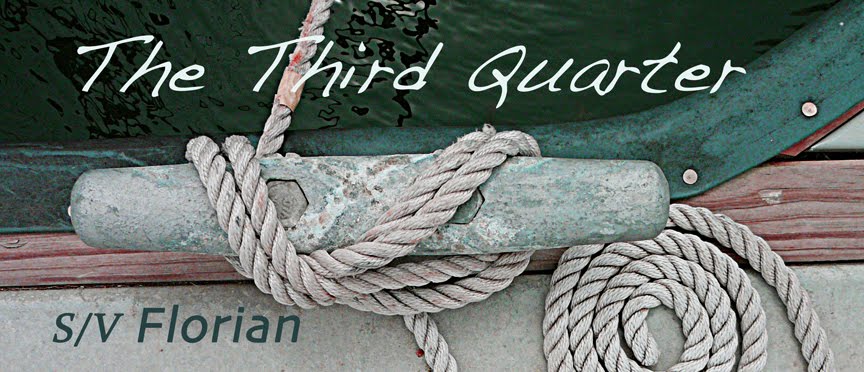 |
| Two phones, the same compass app, in the same location, with different readings. |
Last weekend, I took a Navigation course at the US Coast Guard Auxiliary in Oxnard, CA. Up until a few months ago, I had no idea the Coast Guard offered affordable and comprehensive boating courses to the public. For two days, my brain was marinated in latitudes & longitudes, fathoms, soundings, range bearings, magnetic vs true compass readings, GPS, Radar and plotting courses with a parallel rule, dividers and a pencil on paper, etc. It was excellent. Challenging, for sure, especially for my math-phobic gray-matter, but I learned so much.
 |
| Electronic chart (Nobeltec) showing the shipping lanes in Santa Barbara Channel |
Taking a class on navigation has equipped me with a full course back up plan, and a side dish of confidence. If GPS goes out while we're floating somewhere in the sea in a fog bank, due to electrical failure, a lightening strike, military activity, or this summer's predicted solar flare GPS failures, I can figure out where we are, and where we need to be, and how to get there with a chart, a rule, a compass & a pencil. That peace of mind is a good thing. (I don't know how to use a sextant yet, but just you wait.)
The first weekend in June, Don and I took a USCG course on Boating Skills and Seamanship, which included ID of buoy systems, ATONs, understanding light & horn communication from other vessels, and rules & regulations on the water, etc. That course was also excellent, and the quality of the curriculum and instruction was confirmed when I saw many of the same people we met in that first class attending the Navigation course.
 |
| Buoy Rest Stop for Sea Lions |
Each of the Coast Guard classes cost us $40 apiece, which pays for the in-depth book on the course subject, so if two people take the course and share one book, it's $40. (And if you insure your vessel with BoatUS, they'll give you a 10% discount refund check on your insurance for completing the course.) The instructors are members of the Coast Guard Auxiliary, and they come from a variety of backgrounds with a broad range of interests and specialties. If you're new-ish to boating, have a look at taking a course through your local Coast Guard Auxiliary. Most of the other attendees in the Navigation class were seasoned boaters, and they all agreed that they learned a lot and it was well-worth the time. Since the US Coast Guard has been on the water since 1790, I like to think about the breadth & depth of knowledge they have. That's an abundant well to draw from.
 |
| The book used in the Navigation Course - it's excellent. |
USHarbors
National Weather Service Brochures, Publications and Pamphlets
Annual Boating Accident Statistics
Free download; USCG ATONs (Aids to Navigation) Manual, including buoy markers, beacons & symbols
Details on compliance for a safe vessel, and complimentary vessel safety checks from USCG
 |
| s/v Florian headed back to Ventura CA |














